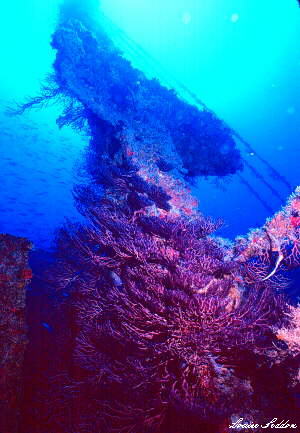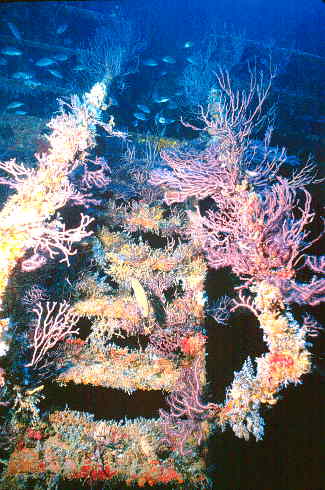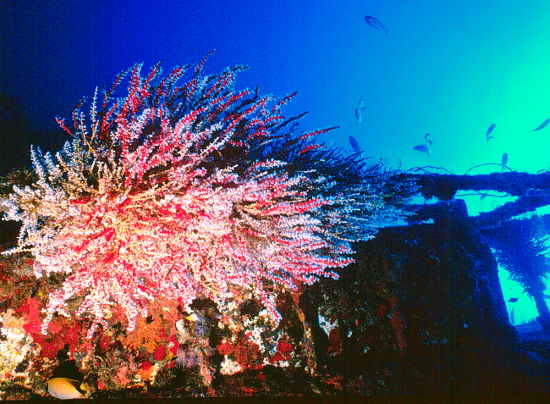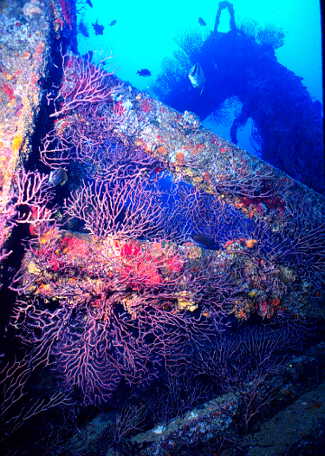
- Other Issues
- >> The Gulfstream Issue
- >> Diving South Florida's Deep Wrecks
Diving Deep Wrecks in South Florida waters
This is one of those "sensitive" documents, where we tell you that material contained in here is classified, and considered "dangerous to your health" for you to read unless you are a "technical diver". If you are a "normal, average diver", please click back to the main table of contents and look for another article.
Since you are still reading this, we will assume you are highly trained and experienced, and what you are about to view will not change the depths or challenges associated with your present diving, just the enjoyment you get out of it.
One of the most spectacular differences between South Florida diving, and anywhere else in the world, is our deep wrecks. We have over 20 wrecks we'd place in the "Best in the World" category, in depths ranging from 175 to 285 feet deep. These wrecks are densely covered with marine life, and they lie under clouds of fish so large, we can safely say, you can not see anything like this anywhere else!!!
 |
A good place to start is the wreck of the Hydro-Atlantic. Its maximum depth is only 175 feet and the upper portions of this great ship reach up to as shallow as 130 feet. Because of its relatively shallow depths, this is one of the few deep wrecks we can get good still photography of. You can see from the still photos below, that the deep is NOT the lifeless desert that it's painted to be by so many dive magazines. |
 |
Shots like these are possible at 175 feet deep, since most camera equipment and strobes will not fail at these depths. While the photos on this page of the HydroAtlantic are spectacular, if we could take the same photo gear down to 280 feet for the Rb Johnson, the photos would really astound you. |
 |
Video is our best tool in capturing the deeper wrecks, because the video camera requires far less light than the stills. This is not to say that it seems dark on these wrecks...even at the bottom of the RB Johnson at 280 feet, there is still excellent contrast and plenty of light for the human eye. Its just not so good for the 35 mm cammera. |
